Uncategorized
Why the story of Noah’s Ark seems timelier than ever
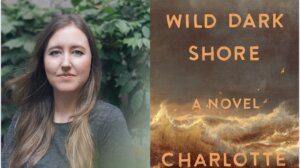
Instead of going to therapy, a widower escapes his trauma by fleeing to an island halfway between Antarctica and Tasmania, where he’s supposed to be taking care of a broken seed vault meant to protect the global food supply against disaster. But various emotional and environmental twists get in the way of his success.
Published earlier this year, Charlotte McConaghy’s climate thriller Wild Dark Shore is the latest entrant in a genre that updates the Noah’s Ark story. It joins the Hulu series Paradise, set in an underground bunker in Colorado after a doomsday event, and the movie Interstellar, where astronauts bearing frozen embryos set off in search of a habitable planet. And then there’s Elon Musk’s plan to colonize Mars.
Wild Dark Shore is a little different, because the life forms that need to be protected from climate disaster are plants, not animals. “It was meant to outlast humanity,” McConaghy writes of the fictional Shearwater Global Seed Vault that her main character, Dom, has to protect, “to live on into the future in the event that people should one day need to regrow from scratch the food supply that sustains us.” In other words, a Noah’s Ark of seeds.
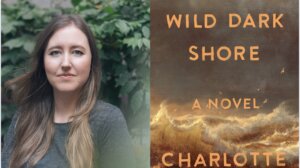
But one irony of climate change is that it threatens the very work humanity does to protect against it. The vault is supposed to remain frozen, but a storm damages its cooling system. Because of rising sea levels, the vault is being flooded, and even fewer seeds can be saved than Dom and the other characters once believed.
In the Noah’s Ark story, Noah can propagate every species, but individual people and animals left behind are drowned. In Wild Dark Shore, only some seeds can be rescued — however many as can be jammed into a small freezer — and part of the challenge is deciding which seeds to save and which ones to allow to go extinct.
Should they pick seeds based on their capacity to nourish the human species, like wheat? Dom’s youngest child has a soft spot for less consequential yet still cool seeds, like that of the wollemia nobilis, a (real-life) evergreen tree that was thought to have been extinct for millions of years then discovered in Australia in 1994.
The seed vault in the book is loosely based on the Svalbard Global Seed Vault in the Arctic Circle, whose tunnel flooded in 2016 due to melting permafrost, or frozen soil, during an extremely hot (for that part of the world) winter. (Thankfully, no seeds were lost.) The vault opened in 2008 and is owned and operated by the Norwegian government. With over 1.3 million seed samples, it’s the world’s largest facility of its kind.
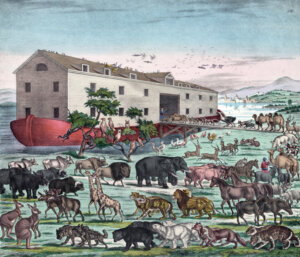
The mental gymnastics necessary to picture a world so radically different, so much worse, than one’s own, is part of what makes science fiction compelling. Mentally, most people struggle to fathom what scientists tell us about the changing climate. Environmental disaster seems too abstract, too far away, and too unpleasant to think about. Books and movies create a mental safe space where we can begin to see what’s at stake.
The Noah’s Ark story takes place long before anyone ever thought about carbon emissions, but it still offers a blueprint for science fiction. “Whether we want to or not, we keep retelling a version of that story every time we imagine what it’s like to survive disaster,” said Jeffrey Cohen, an English professor and the author of Noah’s Arkive, a series of essays analyzing the biblical story through the lens of modern times. “One of the things that the ark gifted the imagination forever with is a kind of self-contained survival-ship. Without the ark, we wouldn’t have spaceships.”
Without spoiling too much of Wild Dark Shore, I’d argue the best lesson climate thrillers offer is that we as a society are emotionally unsuited for the pressures doomsday could place on us. Our best bet is to avoid any situation where our species’ fate winds up in the hands of a traumatized widower, Elon Musk, or any other modern-day Noah — to create a future where everybody can be saved, because there is nothing to be saved from.
The post Why the story of Noah’s Ark seems timelier than ever appeared first on The Forward.
Uncategorized
A French Court Acquitted a Nanny Who Poisoned a Jewish Family of Antisemitism. Now Prosecutors Are Appealing.

Procession arrives at Place des Terreaux with a banner reading, “Against Antisemitism, for the Republic,” during the march against antisemitism, in Lyon, France, June 25, 2024. Photo: Romain Costaseca / Hans Lucas via Reuters Connect
Prosecutors in France have appealed a court ruling that convicted a nanny of poisoning the food of the Jewish family for whom she worked but cleared her of antisemitism charges, in the latest flashpoint as French authorities grapple with an ongoing nationwide surge in antisemitism.
On Tuesday, the public prosecutor’s office in Nanterre, just west of Paris, announced it had appealed a criminal court ruling that acquitted the family’s nanny of antisemitism-aggravated charges after she poisoned their food and drinks.
Last week, the 42-year-old Algerian woman was sentenced to two and a half years in prison for “administering a harmful substance that caused incapacitation for more than eight days.”
Residing illegally in France, the nanny had worked as a live-in caregiver for the family and their three children — aged two, five, and seven — since November 2023.
The French court declined to uphold any antisemitism charges against the defendant, noting that her incriminating statements were made several weeks after the incident and recorded by a police officer without a lawyer present
The family’s lawyers described the ruling as “incomprehensible,” insisting that “justice has not been served.”
The nanny, who has been living in France in violation of a deportation order issued in February 2024, was also convicted of using a forged document — a Belgian national identity card — and barred from entering France for five years.
First reported by Le Parisien, the shocking incident occurred in January last year, just two months after the caregiver was hired, when the mother discovered cleaning products in the wine she drank and suffered severe eye pain from using makeup remover contaminated with a toxic substance, prompting her to call the police.
After a series of forensic tests, investigators detected polyethylene glycol — a chemical commonly used in industrial and pharmaceutical products — along with other toxic substances in the food consumed by the family and their three children.
According to court documents, these chemicals were described as “harmful, even corrosive, and capable of causing serious injuries to the digestive tract.”
Even though the nanny initially denied the charges against her, she later confessed to police that she had poured a soapy lotion into the family’s food as a warning because “they were disrespecting her.”
“They have money and power, so I should never have worked for a Jewish woman — it only brought me trouble,” the nanny told the police. “I knew I could hurt them, but not enough to kill them.”
According to her lawyer, the nanny later withdrew her confession, arguing that jealousy and a perceived financial grievance were the main factors behind the attack.
At trial, the defendant described her statements as “hateful” but denied that her actions were driven by racism or antisemitism.
The appeal comes as France continues to face a steep rise in antisemitic incidents in the wake of the Palestinian terrorist group Hamas’s Oct. 7, 2023, invasion of and massacre across southern Israel.
In a disturbing new case, French authorities have also opened an investigation after a social media video went viral showing a man harassing a young Jewish child at a Paris airport, shouting “free Palestine” and calling him a “pig.”
Widely circulated online, the video shows a young boy playing a video game at Paris’s Charles de Gaulle Airport when a man approaches, grabs his toy, and begins verbally assaulting him.
“Are you gonna free Palestine, bro?” the man, who remains off-camera, yells at the boy.
“If you don’t free them, I’ll snatch your hat off, bro,” the assailant continues, referring to the child’s kippah.
ANTISEMITIC INCIDENT AT PARIS–CDG AIRPORT :
Wednesday, June 25, 2025, at around 7:00 a.m, in the PlayStation Zone
of Terminal 2B at Paris–Charles de Gaulle Airport, a man in his early 30s, speaking with a British accent
, verbally and physically targeted two… pic.twitter.com/8XY3ze0EYb
— SwordOfSalomon (@SwordOfSalomon) December 21, 2025
The man is also heard repeatedly telling the child, “Dance, pig,” while the confused and frightened boy is seen trying to comply
Local police confirmed that an investigation has been launched into the incident, classified as violence based on race, ethnicity, nationality, or religion, as authorities work to identify the individual and bring him to justice.
Paris police chief Patrice Faure expressed his “outrage at these unacceptable and intolerable remarks,” promising that the incident “will not go unpunished.”
Yonathan Arfi, president of the Representative Council of Jewish Institutions of France (CRIF) — the main representative body of French Jews — condemned the incident, calling it “yet another illustration of the climate of antisemitism that has prevailed in Europe” since the Hamas-led atrocities of Oct. 7, 2023.
Uncategorized
Pennsylvania School Board Votes to Fire Principal Over ‘Jew Money’ Comments

Philip Leddy, principal of Lower Gwynedd Elementary School in Pennsylvania, faces termination for allegedly making antisemitic comments. Photo: Screenshot
The Wissahickon School District Board in Pennsylvania has voted to terminate a school principal who confessed to leaving an antisemitic voicemail on the answering machine service of a Jewish parent.
As previously reported by The Algemeiner, Philip Leddy, principal of Lower Gwynedd Elementary School (LGE), spoke of a “Jew camp,” “Jew money,” and argued that Jews “control the banks” in reference to a Jewish parent he had called but did not reach. The remarks were recorded when Leddy forgot to hang up his line after the parent, whom he at one point suggested is most likely an attorney for being Jewish, did not take the call. Having assumed that what he was about to say was private, he then reportedly launched into the tirade before an audience of at least one other district employee also present in the room.
During a meeting on Tuesday, members of the school board voted to fire Leddy, acting on the recommendation of Wissahickon School District superintendent Mwenyewe Dawan — who has herself been accused of promoting and showing bias toward anti-Zionist viewpoints by the North American Values Institute (NAVI). According to local reports, an interim principal, Sue Kanopka, has already been serving in Leddy’s place since Monday.
“Mrs. Kanopka is a familiar and trusted leader in the LGE community and is pleased to provide continuity and stability for students and staff,” Dawan said in a statement shared by a local NBC affiliate.
Dawan also announced a discussion series on antisemitism that will include local Jewish groups.
“We will be partnering with the Jewish Federation of Greater Philadelphia’s Jewish Community Relations Council to facilitate these structured conversations, focused on listening, understanding impact, and moving forward together,” she said. “This session will be designed to listen, learn, and better understand the experiences and concerns of our Jewish community members.”
Leddy’s comments stunned the local community, Jewish and non-Jewish, and on Friday the Jewish Federation of Greater Philadelphia said they betrayed a “mindset” that is indicative of a “broader, systemic issue.”
“The presence of others in the room, the lack of challenge or interruption, and the comfort with which these remarks were spoken raise serious questions about culture, accountability, and oversight within the school environment,” the group said. “We understand the district is also investigating the involvement of others whose voices are audible on the recording, which is a necessary and appropriate step. Words spoken behind closed doors matter. When those words reflect bias, they erode trust and harm entire communities.”
As previously reported by The Algemeiner, the Wissahickon School District has been flagged for previously fostering what some parents described as antisemitic bias.
In June, it was revealed that the district is presenting as fact an anti-Zionist account of the Israeli-Palestinian conflict to its K-12 students by using it as the basis for courses taken by honors students.
Then earlier this month, reports emerged that during a recent demonstration at Wissahickon High School, a Muslim student group festooned signs which said, “Jerusalem is ours,” offered cash prizes related to anti-Israel activism, and swayed school principal Dr. Lynne Blair into being photographed with them, a feat which, according to concerns members of the community, created the impression that anti-Zionism is a viewpoint held by the administration.
Public sector education unions have played a major role in turning K-12 classrooms across the country into theaters of anti-Zionist agitation, thereby alienating Jewish teachers and students, according to a report issued by the Defense of Freedom Institute (DFI) in September.
Titled, “Breaking Solidarity: How Antisemitic Activists Turned Teacher Unions Against Israel”, the report examined several major teachers unions and their escalation of anti-Zionist and anti-Jewish activity following the Hamas-led Oct. 7, 2023, massacre across southern Israel — a series of actions which included attempting to sever ties with the Anti-Defamation League (ADL), staging protests in which teachers led chants of “Death to Israel,” and teaching students that Israel constitutes an “settler-colonial” state which perpetrates ethnic cleansing against Palestinians.
In New York City, report author Paul Zimmerman wrote, the United Federation of Teachers (UFT) has advanced from fostering popular support for anti-Zionism among students to seeking cover from government by placing one or more of its fellow travelers in high office. The UFT endorsed the New York City mayoral candidacy of Zohran Mamdani in July, calling the avowed socialist and Hamas sympathizer a potential “partner.”
“The historical record shows that, whatever their shortcomings, previous generations of teacher-union leaders stood up to antisemitism in K-12 schools on behalf of their Jewish members and promoted strong US support for Israel in the face of existential attacks on that country,” the report said. “Now, antisemitic activists grossly dishonor that legacy by weaponizing teacher unions to spread antisemitism, intimidate Jewish teachers, and recast the classroom as a battlefield against the West.”
Follow Dion J. Pierre @DionJPierre.
Uncategorized
Yehuda Gur-Arye and Shiri Shapira win Rubinlicht Prize for Literature
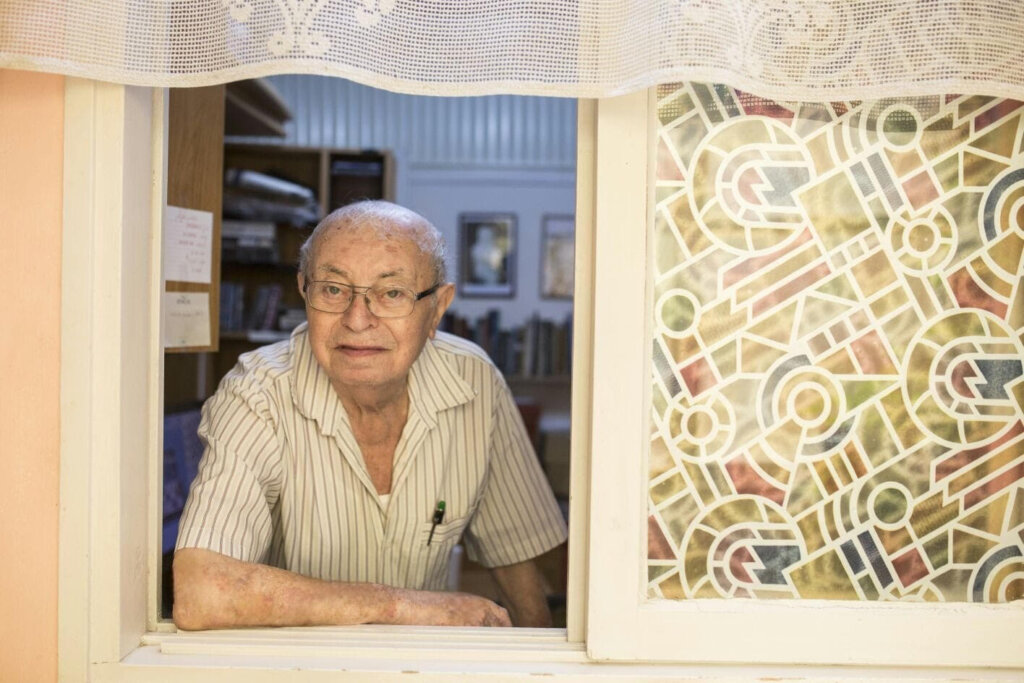
דער אָנגעזעענער פּאָעט און רעדאַקטאָר יהודה גור־אריה און די טאַלאַנטירטע שרײַבערין שירי שפּירא זענען הײַיאָר געוואָרן די לאַורעאַטן פֿון דעם רובינליכט־פּריז. די אויסטיילונג פֿון די פּריזן איז פֿאָרגעקומען דורך זום דעם 16טן דעצעמבער.
די פּרעמיע ווערט געשטיצט פֿון דער פֿונדאַציע אויפֿן נאָמען פֿון אַנאַ און לייב רובינליכט, וועלכער איז אַליין געווען אַ ייִדישער פּאָעט. די פֿונדאַציע, וואָס איז פֿאַרלייגט געוואָרן אין 1986, טיילט צו יערלעכע פּרעמיעס פֿאַר ליטעראַרישער און קולטורעלער טעטיקייט אויף ייִדיש און לטובֿת ייִדיש.
יהודה גור-אריה איז אַ פּאָעט, איבערזעצער און רעדאַקטאָר אין ייִדיש און אין העברעיִש. אַ געבוירענער אין בעסאַראַביע אין 1934 האָט ער דורכגעמאַכט דרײַ יאָר אין טראַנסניסטריע. ער האָט יונגערהייט עולה געווען און זיך באַזעצט אין אלומות, אין עמק הירדן. צענדליקער ביכער האָט ער איבערגעזעצט פֿון ייִדיש אויף העברעיִש, רומעניש און רוסיש. צו זײַן ליד „כפֿל“ האָט נחום היימאַן קאָמפּאָנירט מוזיק און דאָס ליד האָט געזונגען די באַרימטע זינגערין חוה אַלבערשטיין.
אַ גרויסע צאָל ביכער האָט גור־אריה אַרויסגעגעבן; צווישן זיי — „זערורים“, „לידער אין בלוי“, „מיניאַטורן“ (1966); „שבחי קיץ“, לידער (1978); „תעלולי טלי“, דערציילונגען פֿאַר קינדער (1983); „צבעי פרפר“, לידער און אַ צאָל אַנדערע ווערק.
ער האָט אויף העברעיִש איבערגעזעצט ייִדישע ווערק פֿון עלי שעכטמאַן, לייב ראָכמאַן, יצחק באַשעוויס-זינגער, מרים יהבֿ, יהושע פּערלאַ, יענטע מאַש, ש. ל. שנײַדערמאַן, י. י. טרונק און אַלכּסנדר שפּיגלבלאַט, ווי אויך אַן אַנטאָלאָגיע פֿון ייִדישע אַרבעטער־לידער און יאַפּאַנישע לידער.
דער זשורי, וואָס איז באַשטאַנען פֿון טובֿה רעשטיק-דודזאָן, רוני כּהן און דניאל גלאי יהודה גור-אריה, האָט געמאָלדן אַז יהודה גור-אריהן האָט פֿאַרדינט דעם פּריז צוליב „זײַנע ליטעראַרישע שאַפֿונגען אויף עטלעכע זשאַנערן ווי דיכטונג, פּראָזע און דערציילונגען, זײַנע פֿאַרשידנאַרטיקע איבערזעצונגען פֿון ייִדיש, רומעניש און רוסיש וועלכע האָבן באַרײַכערט אונדזער ליטעראַטור, און זײַן אַלגעמיינעם בײַטראָג במשך יאָרן צום קולטור-לעבן אין ישׂראל.“
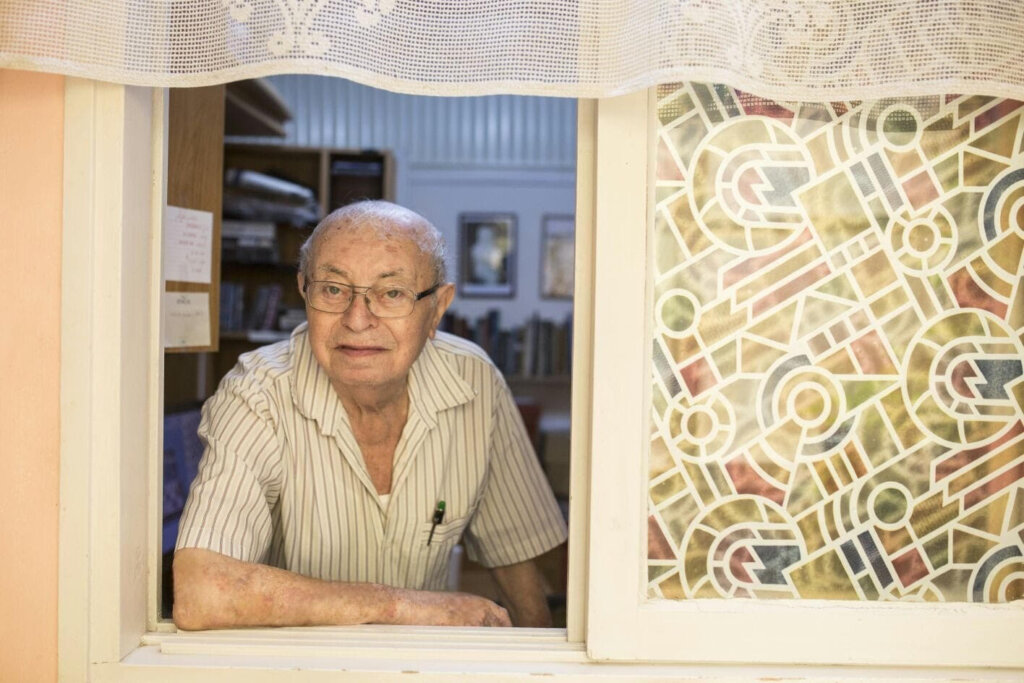
שירי שפּירא איז אַ יונגע ייִדיש-פּראָזאַיִקערין וואָס איז געבוירן געוואָרן אין ישׂראל אין 1987 און וווינט הײַנט אין ירושלים. די טעג איז זי אַ דאָקטאָראַנטקע בײַם בן-גוריון אוניווערסיטעט, וווּ זי לערנט אויך ייִדיש-קלאַסן. זי האָט אויף העברעיִש איבערגעזעצט די ראָמאַנען פֿון מאַקסים בילער, מאַרלען האַוסהאָפֿער, רות אָזעקי און ריטשאַרד פאַווערס, און טעקסטן פֿון פֿרידריך העלדערלין, דניאל קעלמאַן, ישׂראל ראַבאָן און דבֿורה פֿאָגעל. זי איז אויך אַ רעדאַקטאָרשע אין „המוסך“, אַ העברעיִשן ליטעראַטור־זשורנאַל. אירע ייִדישע דערציילונגען זענען געדרוקט געוואָרן אין די זשורנאַלן „ייִדישלאַנד“, „אויפֿן שוועל“ און „די גאָלדענע פּאַווע“.
הײַיאָר דערשײַנט אין לייוויק-פֿאַרלאַג איר ערשטלינג „די צוקונפֿט“, אַ באַנד דערציילונגען. אַ טייל פון זיי זענען געדרוקט געוואָרן אין ליטעראַרישע זשורנאַלן און אַנדערע זענען אין גאַנצן נײַע שאַפֿונגען. דאָס בוך איז אַן אויסדרוק פֿון אַ פֿרוי, אַ שרײַבערין, וואָס איז אויסגעוואַקסן אין ישׂראל מיט אַלע אירע טראַוומעס און קאָנפֿליקטן, און אַ טיפֿן גלויבן אין דער צוקונפֿט.
דער זשורי האָט געזאָגט אַז שפּירא האָט פֿאַרדינט דעם פּריז „פֿאַר אירע ליטעראַרישע, אייגנאַרטיקע שאַפֿונגען וועלכע שטיצן זיך אויף טיפֿע קענטענישן פֿון דער ייִדישער שפּראַך און ליטעראַטור, מיט די פֿאַרשידענע קוואַלן פֿון וועלכע זי שעפּט אַ זעלטענע אַטמאָספֿער און אינספּיראַציע.“
אין איר דאַנקרעדע בײַם באַקומען די פּרעמיע האָט שפּירא אָפֿן־האַרציק אויסגעדריקט אירע געדאַנקען:
„איך פֿיל זיך אַ ביסל אומגעלומפּערט באַקומענדיק אַ פּרעמיע, בפֿרט ווי אַ שרײַבערין וואָס פּובליקירט אַ בוך אויף אַ שפּראַך וואָס איז ניט איר מאַמע-לשון. אָבער איך האָב אַ חשד, אַז אַלע דורות ייִדישע שרײַבערס האָבן זיך געפֿילט ניט באַהאַוונט אין עפּעס אַ זאַך. מסתּמא האָבן זיך ס׳רובֿ פֿון זיי גאָר היימיש געפֿילט אויף מאַמע-לשון, אָבער אָפֿט זענען זיי געווען מענטשן וואָס האָבן געדאַרפֿט זיך שאַפֿן אַ נײַע היים, און אַ נײַע אידענטיטעט, אַ מאָדערנע, אַ וועלטלעכע. אַזאַ פּאָזיציע איז בדרך-כּלל אַ טייל פֿונעם זײַן אַ קינסטלער, און אַ שרײַבער בפֿרט. און גיכער – זי איז אַ טייל פֿונעם ווערן אַ קינסטלער. די אומזיכערע צוגעהעריקייט איז אויך אַ מין אומגעלומפּערטקייט, און אויך אַ שעפֿערישע קראַפֿט. איך אַליין פּרוּוו זי אויסצוניצן ווען איך שרײַב אויף אַ שפּראַך אין וועלכער איך בין נאָך אַלץ אַ גאַסט.
„עס איז ניט גענוג צו זײַן אַ גאַסט אין אַ נאָך אומבאַקאַנטער שטוב. אַ נײַער קינסטלער דאַרף זײַן אַן אָנגעלייגטער גאַסט, אָדער בקיצור – מע דאַרף אַן עולם. דער זשורי פֿונעם רובינליכט-פּריז גיט מיר אַזוי אַ מין צוזאָג אויף אַן עולם. דאָס צוטיילן דעם פּריז אויך יהודה גור-אריה, אַ שרײַבער און איבערזעצער פֿונעם עלטערן דור, איז פֿאַר מיר אויך אַ צוזאָג אַז דער עולם וויל נאָך בלײַבן אויף לאַנגע יאָרן. איך וויל דאָ אויסדריקן אַ האַרציקן דאַנק פֿאַר אָט דער פֿאַרבעטונג, און אויך אַ האָפֿענונג אַז ווײַטערע אָנגעלייגטע געסט וועלן נאָך אָנקומען אין דער ייִדישער ליטעראַטור, און אַז זיי וועלן נאָך בלײַבן.“
The post Yehuda Gur-Arye and Shiri Shapira win Rubinlicht Prize for Literature appeared first on The Forward.




